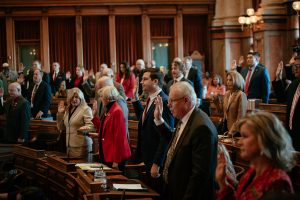Trump’s White House Ballroom: A Symbol of Private Spending During Government Crisis

U.S. President Donald Trump toured the roof of the West Wing of the White House on Aug. 5, 2025, in Washington, D.C., as part of ongoing renovation projects that include a concrete patio in the Rose Garden. Architect James McCreary, pictured in a bow tie, is involved in the work.
Every president seeks to leave a legacy—both in policy and physical changes to the White House. While some have done so subtly, others have made bolder statements. George W. Bush restored the Situation Room; Bill Clinton modernized the kitchen. Now, Donald Trump is adding his own mark with a new White House Ballroom.
The project, initially a modest upgrade, has expanded into a near-complete renovation of the East Wing. Its scale and evolving costs have drawn attention from supporters and critics alike. The ballroom has become a polarizing symbol, reflecting the contentious nature of Trump’s presidency.
Importantly, the ballroom’s expenses are not funded by taxpayers. Instead, Trump and private MAGA donors cover the costs. This distinction is significant amid public scrutiny of government spending and a partial shutdown. Unlike previous presidential upgrades—such as Obama’s basketball court—the Trump Ballroom avoids adding to the deficit or impacting federal workers’ paychecks.
Still, the timing has sparked debate. While some view it as an example of private initiative and legacy-building, others see it as emblematic of misplaced priorities during a government shutdown. The sight of construction at the White House while federal employees face furloughs risks sending a troubling message about leadership’s values.
Jim Renacci, a former U.S. Congressman, notes that leadership requires balancing fiscal responsibility with symbolic gestures. For supporters, the ballroom represents Trump’s commitment to American institutions. For detractors, it appears as extravagance amid economic strain.
Historically, presidential changes to the White House reflect both personal taste and national mood. Trump’s addition aligns with this pattern, blending modern showmanship with traditional grandeur. However, the broader question remains: what message does this send during a period of division and hardship?
The ballroom’s legacy will depend on how it is framed. If presented as private stewardship, it may be seen as a positive investment. If perceived as self-congratulatory, it could deepen public frustration. Ultimately, the focus is not just on the structure itself but on the context of its creation.
Trump’s name is already tied to transformative policies on trade, immigration, and global leadership. The ballroom ensures his architectural imprint endures, though its reception will hinge on perception and timing. As with all political decisions, the optics matter as much as the outcome.






